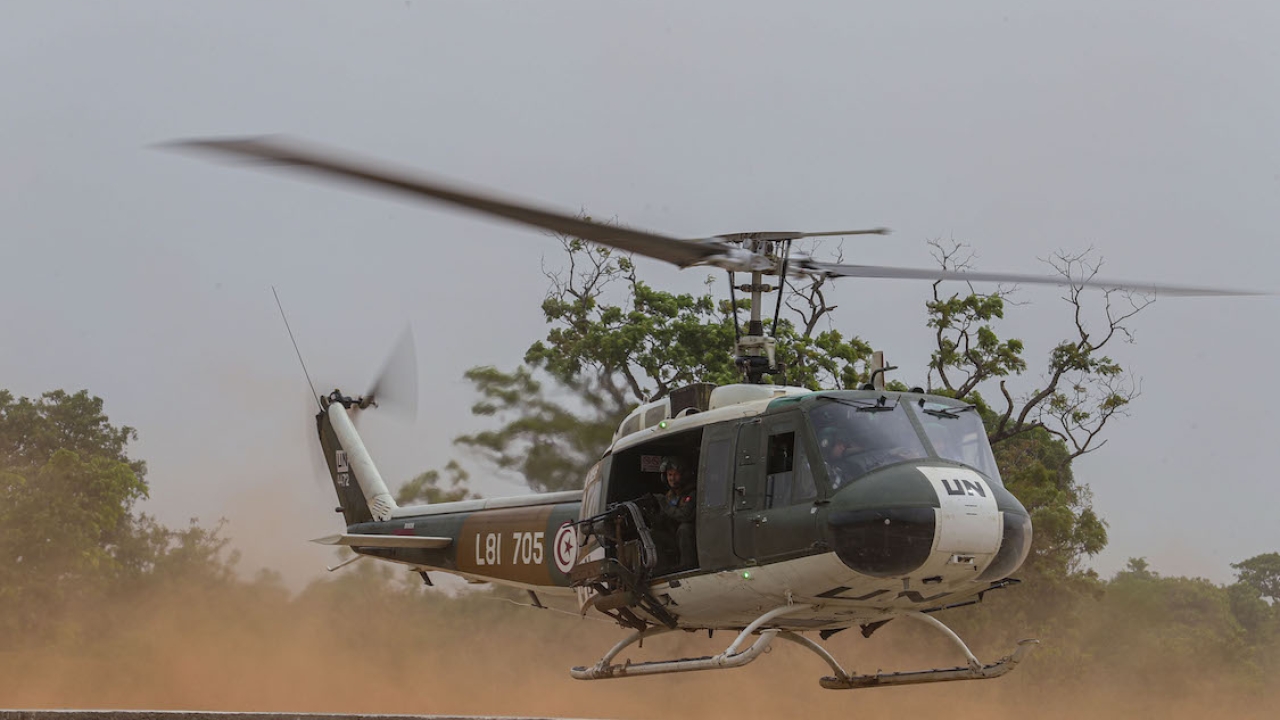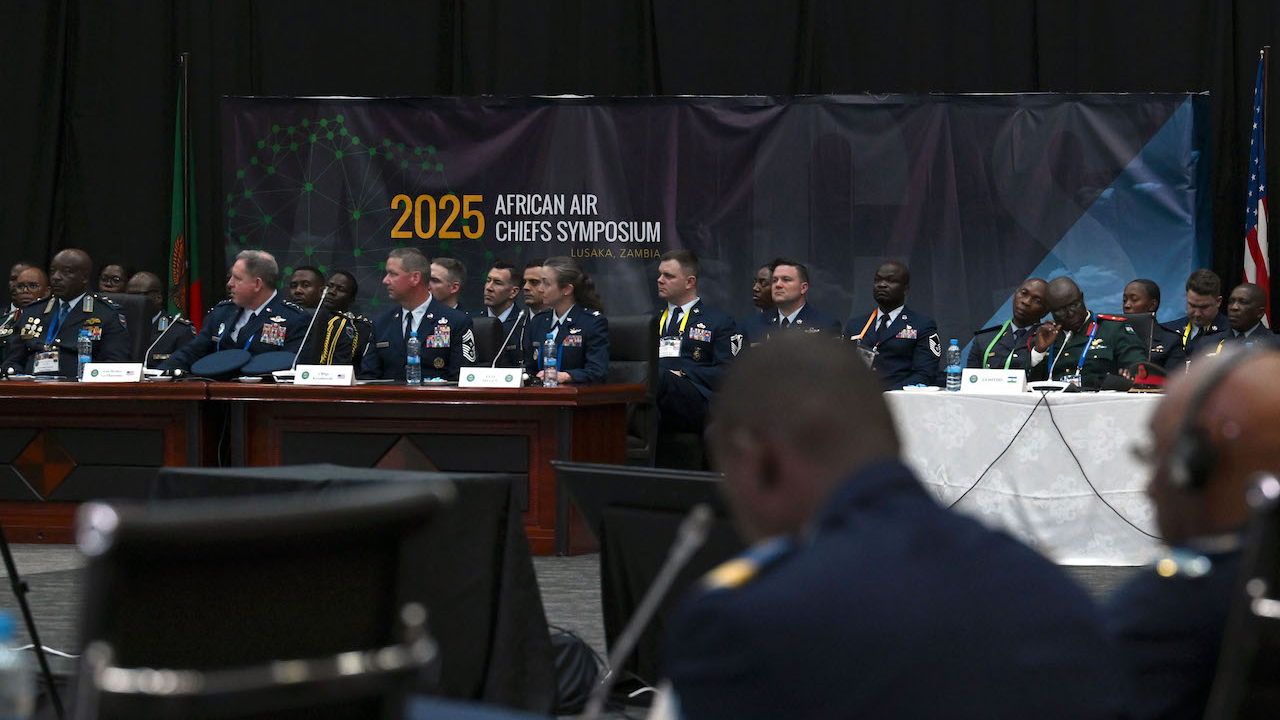Car trip
A look at the Tunisian helicopter unit's line of duty in the Central African Republic.

The Tunisian AB 205s are all armed with cabin-mounted machine-guns. Seen here is an FN MAG, although the Dillon Aero M134D can also be carried. Picture: MINUSCA.
March 2022, early morning in the western Central African Republic (CAR). Two Agusta Bell 205 helicopters with United Nations and Tunisian Air Force (TAF) markings are flying in close formation at low altitude over the Batangafo-Bouca road.
Machine-gunners on each side of the aircraft keep a close eye on the ground, looking for signs of the presence of armed groups in the area, while, inside, a sensor operator does the same using an externally mounted camera.
In the meantime, ground troops are moving through the area to flush out the bandits and reassure the civilian population. The two helicopters loom close by, ready to deliver air support when needed.
The former is a good example of the duties performed by the Tunisian Armed Helicopter Unit, which has been deployed under the banner of the United Nations multidimensional integrated stabilization mission in the CAR (MINUSCA) for nearly a year now.
The unit has made its home at the Bangui M’Poko Airport and comprises 130 people, including five aircrew, each made up of two pilots, one flight engineer and two gunners, and three AB 205s hailing from the TAF’s 32nd Squadron based at Sidi Ahmed Air Base in Bizerte.
The Tunisian helicopters fill a gap left following the withdrawal of the Senegalese Mi-35s from the CAR in 2019.
According to a spokesperson for the unit, the helicopters and their support equipment were transported to Bangui in several rotations of TAF Lockheed Martin C-130J, while personnel flew on a chartered commercial aircraft on September 22 2021.
Meanwhile, ground support equipment and spare parts were shipped by sea from Tunisia to Douala in Cameroon and from there moved by road to Bangui.
Following aircraft assembly and testing, the Tunisian detachment was declared fully operational on November 6 2021 and started flying operations on November 8.
The Tunisian AB 205s are tasked with carrying out multiple duties including VIP, personnel and cargo transport, search-and-rescue, close air support, intelligence, surveillance and reconnaissance (ISR), casualty and medical evacuations, armed escort, air assault, and air control.
The aircraft can be armed with FN MAG and Dillon Aero M134D 7.62mm cabin-mounted machine-guns and with 70mm rocket launchers under two external hardpoints. A single Teledyne FLIR Star Safire III electro-optical/infrared (EO/IR) sensor can be externally mounted on the left side of the airframe for ISR duties.
The aircraft are also outfitted for night flying using night vision goggles (NVG), a particularly valuable feature allowing for greater tactical flexibility, which was previously lacking in MINUSCA.
These weapons and equipment are all part of the standard fit of the aircraft in TAF service and no special modification was made to any of the helicopters for the purpose of their deployment to the CAR.
The unit is intended to be assigned to MINUSCA for a year, although mandate extensions could increase this out to August 31 2024.
Pre-deployment preparation starts in Tunisia and includes several lectures and courses on local customs and legal aspects, as well as UN rules of engagement. It concludes in the CAR, where additional operational matters of significance are also reviewed.
Between November 2021 and August 2022, the Tunisian unit flew more than 300 hours despite the ongoing fuel supply crisis, which is having an impact on the CAR.
Flying in the region involves many challenges due to the lack of navigation aids in the country, as well as the changing weather, which includes heavy downpours during the rainy season.
The heat tends to affect aircraft performance and the dust when landing in unprepared areas can be a major hazard due to the “brown out” phenomenon, where an aircraft is surrounded by a cloud of dust and the aircrew is left without spatial references while closing the ground. According to the spokesperson, Tunisian fliers are quite familiar with several of these difficulties due to their experience operating in the desert, where sand and high temperatures are ubiquitous.
Overall, the TAF’s helicopter unit provides MINUSCA with a vital airborne multipurpose armed capability and its deployment is also a major achievement for Tunisia, which had never before sent helicopters to a UN mission. Although, as the spokesperson highlighted, it follows in the footsteps of the commitment of a Tunisian C-130J to the United Nations mission in Mali since 2019.
Stay up to date
Subscribe to the free Times Aerospace newsletter and receive the latest content every week. We'll never share your email address.

